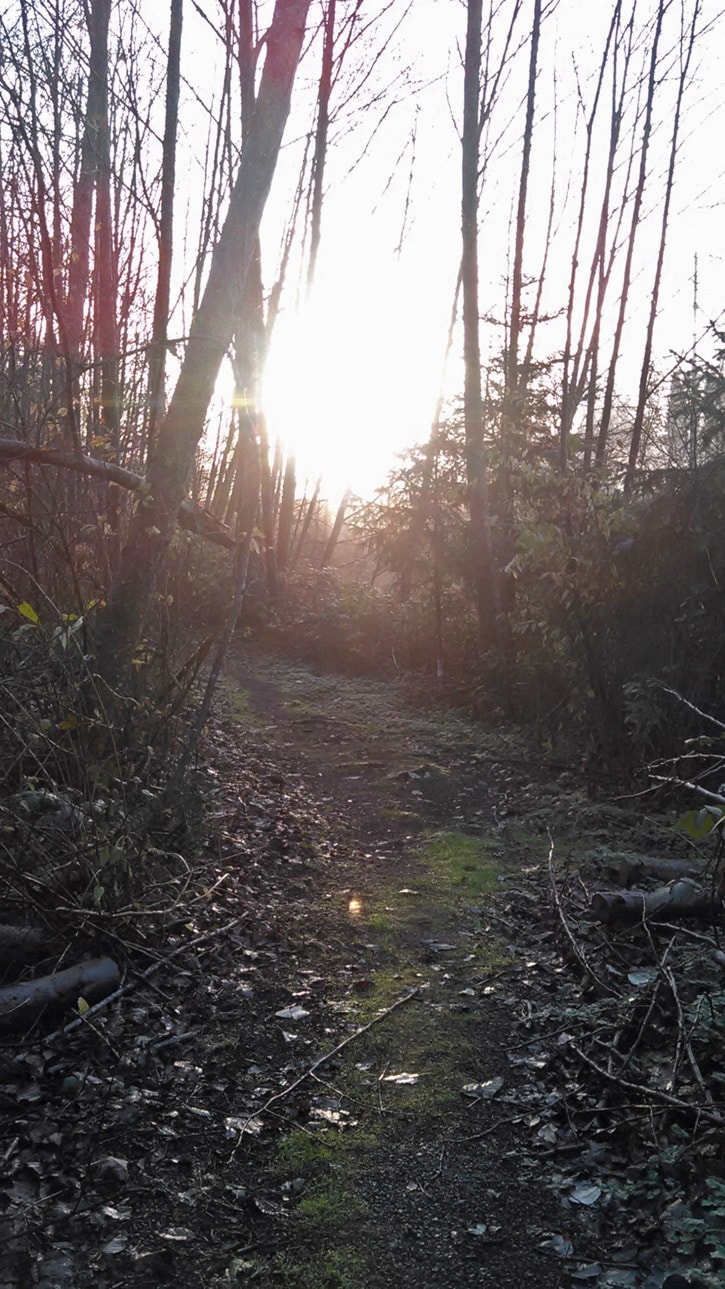Instead of sailing off into the sunset, this morning I walked into the sunrise. After several months of frequently dreary weather, it was good to see. A light at the end of the tunnel.
I was walking the trails at Trinity Western University, and numerous birds were awakening to the light, too.
I inadvertently disturbed one bird who would rather sleep through the light — an owl. I certainly was woken up by the sight of him flapping silently away to find another place to sleep.
As the days grow shorter and shorter this time of year, our human need for light becomes more urgent as people who suffer from seasonal affective disorder (SAD) are well aware.
It is amazing to think that just over a century ago, electric light was a new thing. Thomas Edison’s invention of the light bulb in 1879 paved the way for the concept of electric power for all, which was pioneered to a large degree in Seattle.
In 1886, just seven years after Edison’s patent, the Seattle Electric Light Company began lighting up the town. In ensuing decades, J.D. Ross, referred to as “the Father of City Light,” would pursue an ambitious plan to light up Seattle via power from dams on the Skagit River.
Now as nearly every city in the world has followed Seattle’s example, we suffer unforeseen ecological consequences, ranging from the ecological impacts of dams and other methods of obtaining power to the disorienting effects of lights at night on bird navigation.
Still light is highly sought out on the rainy — and recently snowy — west coast. Christmas lights appear this time of year to bring yet more light, often in spectacular form.
Of course, there is no substitute for “natural light.” On earth we receive an estimated 174 quadrillion watts of energy from the sun daily — much more than we could ever harvest for solar power.
However, as I gazed towards the sunrise on my walk this morning, I was happy to think about all the light the trees, mosses, and other plants were harvesting and converting to energy via photosynthesis.
Human beings have created huge industrial outputs in the last century or so, partly due to the revolution in electric power, but meanwhile the sun goes on producing vegetation to support life on earth at a rate of something like 170 X 109 tons per year.
So the moral of the story is, if you are feeling down about energy issues, keep looking to the light at the end of the tunnel. It’s probably brighter than you imagine.
David Clements is Professor of Biology and Environmental Studies at Trinity Western University
